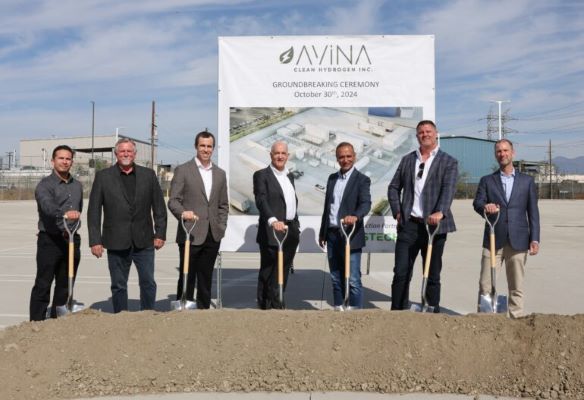Avina Clean Hydrogen Project: Revolutionizing Green Energy in Southern California
Key Ideas
- Avina Clean Hydrogen's groundbreaking ceremony in Vernon, Southern California, marks a significant step towards decarbonizing heavy-duty transport and supporting clean energy goals.
- The state-of-the-art facility is set to produce 4 MTPD of compressed green hydrogen through electrolysis, reducing approximately 130,000 metric tons of CO2 emissions annually.
- The strategic location will support transportation corridors and urban markets, meeting the increasing demand for clean hydrogen in the region.
- With environmental permits secured, construction is scheduled to start in July 2025, aiming to revolutionize green energy in Southern California.
Avina Clean Hydrogen recently celebrated a groundbreaking ceremony for its green hydrogen project in Vernon, Southern California, near the Port of Long Beach. The facility aims to produce 4 metric tons per day of compressed green hydrogen through electrolysis, contributing to the decarbonization of heavy-duty transport and California's clean energy objectives. This project is a major advancement in the company's quest to reduce carbon emissions and enhance air quality in the local communities. The facility's operation will involve splitting water into hydrogen and oxygen using clean electricity, positioning it as one of the largest integrated electrolytic hydrogen production and refueling sites globally. Vishal Shah, the Founder and CEO of Avina Clean Hydrogen, highlighted the strategic advantage of the facility's location in serving transportation corridors and urban markets to meet the rising demand for clean hydrogen. The collaboration between Avina Clean Hydrogen and FASTECH aims to develop a reliable hydrogen generation and distribution facility, emphasizing innovation in clean energy solutions for a sustainable future. The announcement received enthusiastic support from the California Hydrogen Business Council, recognizing the facility's role in expanding hydrogen applications in zero-emission vehicles and distributed power generation to enhance air quality and decarbonization efforts. The project, expected to commence construction in July 2025, has secured key environmental permits, setting the stage for a transformative impact on green energy in Southern California.
Topics
Green Hydrogen
Infrastructure
Innovation
Sustainability
Transportation
Green Energy
Decarbonization
Air Quality
Clean Energy Goals
Latest News
